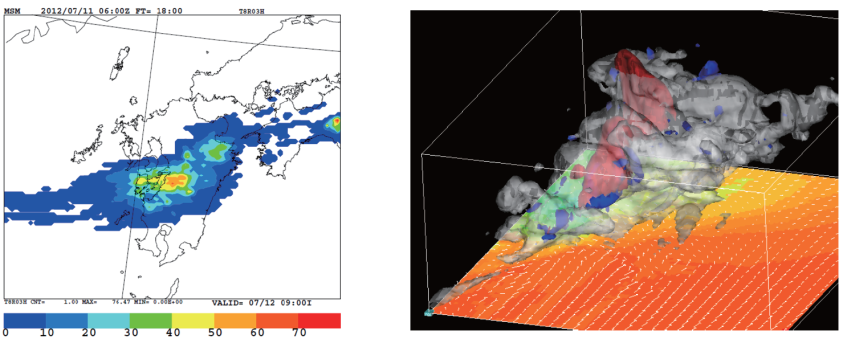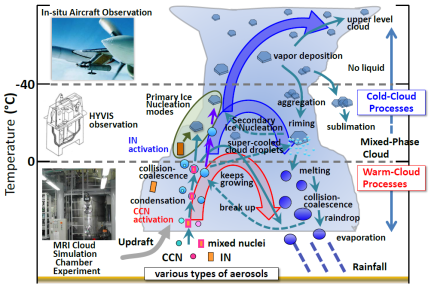Research on improvement of mesoscale weather prediction and information for disaster prevention
Improvement of prediction for mesoscale severe weather phenomena such as torrential rain, heavy snowfall and tornadoes is very important in disaster prevention. In this study, atmospheric numerical models with high accuracy and high resolution are developed along with high-resolution data assimilation methods and ensemble forecasting techniques to support the numerical prediction of mesoscale severe weather events. Through case studies, the meteorological mechanisms and atmospheric conditions of severe phenomena are elucidated. The basic processes for cloud microphysics are also studied through laboratory/numerical experiments and field campaigns toward numerical model improvement.


Upper left: Probability of precipitation with a threshold exceeding 50 mm in a three-hour period as estimated from ensemble prediction for a heavy rainfall event in northern Kyushu in July 2012. A high probability (50%) of heavy rainfall was determined 18 hours before its occurrence.
Upper right: Numerical simulation of a super cell thunderstorm occurring on 6 May 2011 when an F-3 tornado hit the city of Tsukuba. Gray shading shows cloud; red shows strong updraft areas, blue shows intense vertical vorticity, and the colors of the bottom plane indicate surface temperatures.
Lower left: Atmospheric aerosols act as cloud condensation nuclei and/or ice nuclei and influence the microphysical structures, radiative properties, spatio-temporal scales and precipitation efficiency of clouds. The effects of aerosols on cloud and precipitation processes have been studied through laboratory experiments, field observations and numerical simulations.
